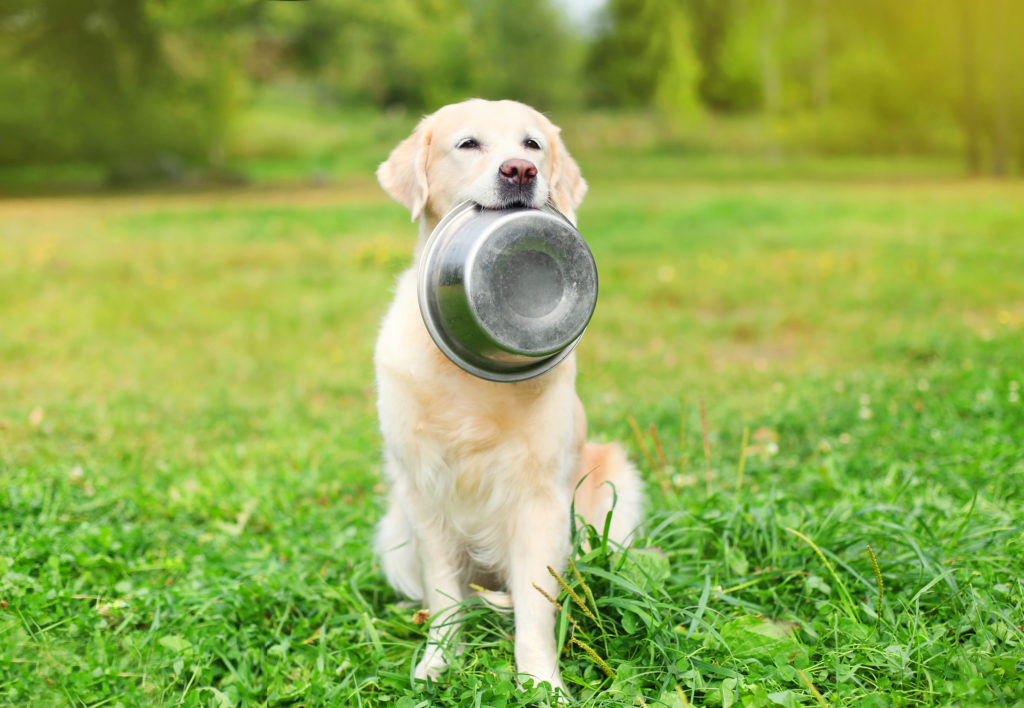
Tips on Choosing a Diet for Your Pet
In the past few decades, we have seen a significant shift in the role dogs and cats play within our family. Cats, once used as barnyard rodent control, are kept primarily indoors and take regular trips to the vet. Canine companions have moved out of the doghouse and into the master bedroom, where they’re likely to share the human bed or have one of their own. Dogs and cats have truly become full-fledged members of the family, and like all family members, we want nothing but the very best for them. A huge part of that is deciding on the best food for your pet. With a myriad of options available choosing the right diet for your dog or cat can be a daunting task. In addition to the sheer number of options, pet owners are also faced with various food philosophies such as raw diets, grain free diets, wet vs. dry, etc. When it comes to choosing a diet for your pet you should always consult your veterinarian. But many of the tips below can give you a better understanding of the pet food industry and serve as a jumping off point to have an open and honest conversation with your veterinarian about the best fit for your individual dog or cat.
- Every kind of animal has unique nutrient requirements and various idiosyncrasies in metabolism. Dogs and cats have different nutritional needs than humans.
- Dry and canned pet foods are designed to deliver the appropriate balance of nutrients when fed in appropriate daily amounts. You should not have to prepare additional human food, nor supplement with vitamins. In fact, over the counter pet “vitamins” can cause detrimental mineral excess.
- Should you choose to cook a homemade diet for your pet, it can be difficult to ensure that you are providing the correct proportions of vitamins, minerals, and other nutrients. To avoid dangerous deficiencies and excesses we recommend you consult a veterinary nutritionist.
- Puppies and kittens have very different nutrient requirements than do older pets. Foods formulated for growth help support development of bone and muscles, the immune system, and neurological function.
- Puppies and kittens should be transitioned to an adult maintenance diet at around 10-12 months of age.
- Some diets are marketed “for all life stages.” These diets may even have undergone feeding trials for all life stages. The fact that this diet has passed a feeding trial for puppies and kittens means that it is essentially a puppy or kitten appropriate food.
- A large breed puppy should ideally grow slower than other puppies (over a longer time period) in order to promote healthy joint formation and prevent problems like hip dysplasia. Large breed puppies should be fed a large-breed puppy food with less calories and calcium. Large breed adult dogs will also benefit from a specific large-breed formula.
- Nutrient requirements change as a dog or cat ages. A senior diet will contain a highly digestible protein and lower levels of certain nutrients, such as phosphorus and sodium. These diets are harder on the kidneys, but will contain fewer calories to prevent weight gain as your pet becomes less active. A senior diet may become appropriate at around 7-8 years of age.
- Many smaller breed dogs are prone to developing dental disease. These dogs will benefit from a small-breed oral care diet, which can be found at most retailers.
- When choosing a brand of food, check to see that it says “AAFCO” certified. AAFCO (Association of American Feed Control Officials) certification means that this diet has undergone extensive testing to ensure that every bag contains the nutrients that it claims; and feeding trials to show that it is able to maintain the health of the cat or dog.
- When comparing calories or nutrients between different foods, check to make sure that the nutrients are being reported on a “Dry Matter Basis.” This means that the moisture has been removed. Some companies may report calories on an “as fed” basis or with the moisture (which is zero calories) still in the food, per unit volume. In this way, the calories seem to be a lot less. Comparisons between foods reported on a dry matter basis and reported on an “as fed” basis are meaningless. If the bag does not specify which way the nutrients are reported, you should call the manufacturer and ask.
- “By-products” are not beaks and feathers.
- Remember, no single ingredient makes a pet food better or worse. A pet food is the sum of its parts and should provide a balance of quality ingredients.

Dr. Dana Kuehn joined Friendship in 2005 and is our Chief of Primary Care Services. She is originally from Minnesota, where she completed a BS in biology and graduated from the University of Minnesota College of Veterinary Medicine in 1995. She completed a rotating internship in small animal medicine and surgery in Hollywood, Florida and continued on as an associate in the practice for 10 years. Her professional interests include endocrinology, ophthalmology, soft tissue surgery, and urology.
